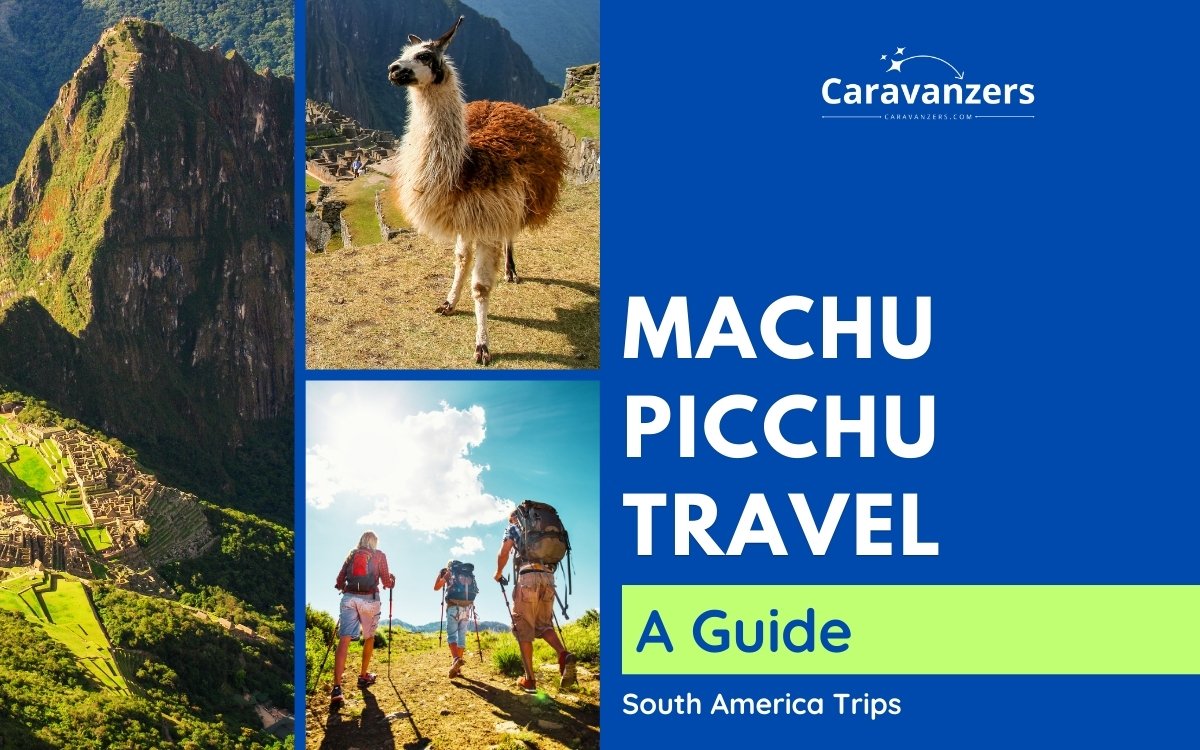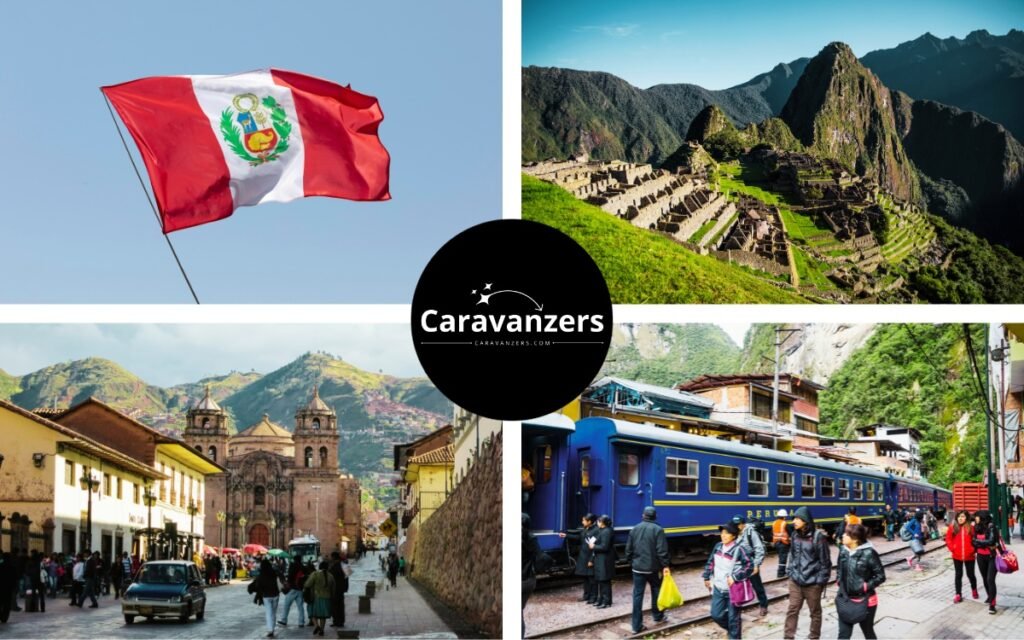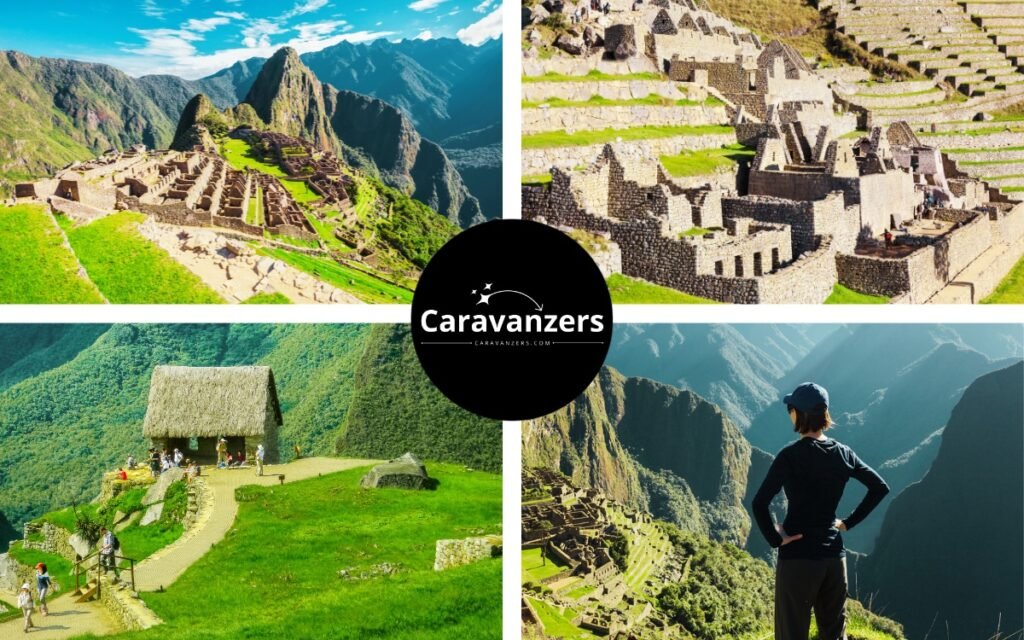
Machu Picchu travel guide. From how to get there to what to do, this guide will help you plan your trip to this incredible site in Peru.
This site attracts many visitors due to its historical significance, breathtaking scenery, and architectural marvels.
So, a visit means an experience of the unique blend of cultural exploration and natural beauty in the country.
In this guide, I will focus on helping you plan your trip.
Machu Picchu Tourism

Machu Picchu is nestled high in the Andes as an ancient Incan citadel that offers a breathtaking blend of history, culture, and natural beauty.
Its intricate stone architecture, surrounded by lush greenery and panoramic mountain vistas, creates a mesmerizing atmosphere.
So, visiting this UNESCO World Heritage Site allows you to dive into the mysteries of Incan civilization and witness the engineering marvels of the past.
The journey to Machu Picchu, whether via the Inca Trail or other routes, is a unique adventure, while the spiritual ambiance of the site connects visitors with a unique cultural experience.
It’s an unparalleled experience for history enthusiasts and nature lovers alike.
Machu Picchu attracts over a million visitors annually, a testament to its global allure.
Despite its popularity, though, reaching this iconic site isn’t a walk in the park. The nearest airport, Alejandro Velasco Astete International Airport in Cusco, is several hours away by train or bus.
In other words, you will have to go through a demanding journey through the picturesque Peruvian landscape.
Meanwhile, Machu Picchu operates on Peru Time (PET), typically 5 hours behind Coordinated Universal Time (UTC-5).
The official currency is the Peruvian Sol (PEN), which is about 4 to 1 US dollar.
As for the weather, Machu Picchu’s climate is divided into two main seasons: the dry season (May to October) and the wet season (November to April).
The dry season means clear skies and sunny days, and the rainy season brings heavier rainfall and lush green landscapes.
So, plan your visit based on your preferred weather conditions and activities.
How to Get There
To enter Peru, you typically need a valid passport with at least six months of validity, and in some cases, a visa may be required based on your nationality.
Check with the Peruvian consulate or embassy for the most up-to-date entry requirements and visa information before planning your trip.
For Americans, Canadians, Europeans, and several others, you can enter the country and stay up to 90 days without a visa.
To reach Machu Picchu, the best route is by taking a train from Cusco along the Urubamba Valley, which comes with stunning views of the surrounding landscapes.
Once you arrive at Aguas Calientes, a nearby town, travelers can choose to take a bus directly to the entrance of Machu Picchu for a convenient and comfortable ride.
For those seeking a more adventurous approach, there’s an option to hike from Aguas Calientes to Machu Picchu.
While strenuous, this trek is a rewarding experience, taking approximately 90 minutes to two hours, allowing you to immerse yourself in the natural beauty of the region before reaching the iconic ruins.
If you’re driving from Cusco to Machu Picchu, follow the road to Ollantaytambo, which is an absolutely gorgeous ride.
From there, continue to the Hydroelectric Station, where the road ends.
Park your vehicle and then take a train or hike to Aguas Calientes.
Finally, choose between the bus or the more challenging hike to reach the entrance of Machu Picchu.
What to Do at Machu Picchu

Once you arrive at Machu Picchu, you will be able to explore the awe-inspiring ruins and marvel at the ancient Incan architecture.
Wander through the intricate stone structures, visit the Temple of the Sun, and capture panoramic views of the surrounding mountains.
Honestly, you can’t imagine how incredible it feels to be there.
This is really a great time to take selfies, both photos and videos, as well as maybe livestream for family and friends back home.
Meanwhile, engage with local guides to learn more about the historical mysteries and cultural significance of this UNESCO World Heritage Site.
There is so much to learn! As you will find out, this was once an incredible, smart culture.
Of course, take in the breathtaking landscapes and consider hiking to iconic spots like the Sun Gate or Huayna Picchu for even more stunning vistas.
Machu Picchu has several important structures, each with unique significance. The Intihuatana stone, often called the “Hitching Post of the Sun,” is a ritual stone associated with astronomy.
The Temple of the Sun has exquisite stonework, while the Room of the Three Windows and the Main Temple exemplify the Incan architectural prowess.
Likewise, the agricultural sector, with its terraces and farming areas, highlights the site’s self-sufficiency.
Similarly, the residential areas, including the Royal Quarters and the House of the High Priest, offer insights into daily life.
So, these structures collectively represent the religious, residential, and agricultural facets of the Incan civilization at Machu Picchu.
Some Basic Facts
First of all, “Machu Picchu” translates to “Old Peak” or “Old Mountain” in the Quechua language, an indigenous language spoken in the Andean region.
The name aptly describes the site’s location atop a mountain ridge, where “Machu” means “old” or “ancient” and “Picchu” refers to a mountain or peak.
Meanwhile, the Quechua people, who predominantly inhabited the Andean region, shared linguistic and cultural connections with various indigenous groups in the area.
Other major ethnic groups in the Andean region included Aymara, Asháninka, Shipibo, and Awajún, each with distinct languages, cultures, and histories.
The Inca civilization was primarily led by the Quechua-speaking people, and they established and ruled the entire empire, which was the largest in pre-Columbian America.
Finally, modern Peru has a diverse demographic with a mestizo population comprising 60.2%, who have a blend of Amerindian and white ancestry.
Amerindians constitute 25.8% of the population, while the white population stands at 5.9%.
Additionally, individuals of African descent make up 3.6%, and there are smaller percentages of other ethnicities, including Chinese and Japanese descent (1.2%).
About 3.3% of the population falls under unspecified or other categories.
World Wonder
As a New World Wonder, Machu Picchu stands alongside other major structures of our world, including the Taj Mahal and the Pyramids of Egypt.
Each is a cultural and architectural masterpiece, yet distinct. Machu Picchu mesmerizes with its ancient Incan citadel and breathtaking mountain setting.
Machu Picchu is a world wonder due to its exceptional Incan architecture, stunning mountainous setting, and cultural significance.
For these reasons, it truly captivates visitors with its historical and aesthetic marvels.
As a result, Machu Picchu was declared one of the New Seven Wonders of the World on July 7, 2007, following a global poll conducted by the New7Wonders Foundation.
Final Thoughts
This Machu Picchu travel guide provided information on how to reach the destination and suggested activities to plan a trip to this remarkable site in Peru.
As I said previously, the site attracts millions of visitors mainly because of its historical importance, stunning landscapes, and impressive architectural wonders.
Therefore, a visit to Machu Picchu is an opportunity to experience a distinctive combination of culture and nature.
So, go ahead and plan your trip.
Enjoy Machu Picchu!
AJ Paris is a travel photographer based in New York. He is the editor of Caravanzers.
Follow us on Pinterest.

One Comment
Comments are closed.